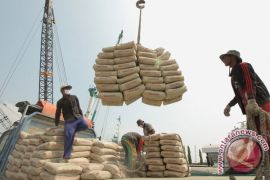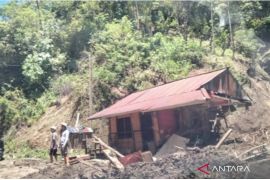According to a statement from SIG in Jakarta on Saturday, SPAFACON is an international forum for sharing and updating archaeological knowledge in Southeast Asia. The annual agenda took place on June 10-14, 2024, in Bangkok, Thailand.
"SIG is an example of a few companies that play an active role in the efforts to conserve archaeological sites," Senior Specialist in Archaeology and Head of the Organizing Team of SPAFACON Noel Hidalgo Tan stated.
"We hope that SIG's actions can be emulated by other companies in Indonesia and the Southeast Asia region," he added.
Tan highlighted that SIG, as a company, has demonstrated a high commitment to conserving archaeological sites and cultural heritage in the Southeast Asian region.
This is proven through the release of the Cultural Heritage Management Plan (CHMP) document for the prehistoric site at Bulu Sipong IV.
Meanwhile, Hasanuddin University (Unhas) academic Yadi Mulyadi stated that the Maros-Pangkep karst in South Sulawesi has a plethora of rock art sites known as the oldest cave paintings in the world.
The karst tower has numerous natural dwellings or shelters made of rocks that bear images of animals and humans dating back over 40 thousand years.
The surrounding area also has sites that housed ancient stone tools.
Based on the research result, it was found that several of those prehistoric sites were located in clay mining concessions managed by SIG's subsidiary, PT Semen Tonasa.
The research was conducted by PT Semen Tonasa, the South Sulawesi Cultural Heritage Conservation Center (now the Region XIX Cultural Conservation Center), and the Maros-Pangkep Geopark Management Agency in 2018.
On the same occasion, SIG's Sustainability Office SVP Johannad Daunan explained that based on SIG's recommendations, Semen Tonasa had designated 31.64 hectares or 11.3 percent of the total mining area of 280 hectares in Bulu Sipong as a conservation area.
Semen Tonasa actively collaborates with the Region XIX Cultural Preservation Center in managing Bulu Sipong.
Efforts made to manage Bulu Sipong comprise regular monitoring of vibrations and ambient air by a third party.
As a result, the vibration value is maintained below national standards for cultural heritage buildings as well as the ambient air quality around the site that is also maintained according to the standards of the Ministry of Environment and Forestry.
The company also carried out 1,800 meters of road casting and regular watering of the mine road to reduce dust in addition to disseminating information to employees and members of the local community about the importance of preserving prehistoric sites to ensure site safety.
The company has installed signs and restricted access by installing a 1,900-meter-long fence as well as conducted re-vegetation in the conservation area.
The CHMP document will serve as a guide for managing the cultural heritage owned by the company, including Bulu Sipong, which is a cultural heritage site, to ensure sustainable management while considering the existing cultural values.
The CHMP document was determined through a series of literature research results, focus group discussions (FGDs), and field observations involving the UNESCO Global Geopark Maros-Pangkep Management Agency and Hasanuddin University Research and Community Service Institute (LPPM).
Others involved in the document determination process were the Region XIX Cultural Preservation Center (BPK) and archaeology, anthropology, geology, biodiversity, and tourism experts as well as various other stakeholders.
A series of FGDs was carried out with the community to delve deeper into the archaeological and historical potential of the Semen Tonasa concession area as well as the company's future development plans.
"SIG hopes that the Bulu Sipong site can become a means of education and help promote history and culture to the wider community," SIG Corporate Secretary Vita Mahreyni stated.
Related news: Optimize ISCOS 2022 to support G20 Presidency, realize SDGs: VP
Related news: On-target CSR fund utilization to create inclusive economy: VP Amin
Translator: Bayu Saputra, Cindy Frishanti Octavia
Editor: Rahmad Nasution
Copyright © ANTARA 2024











